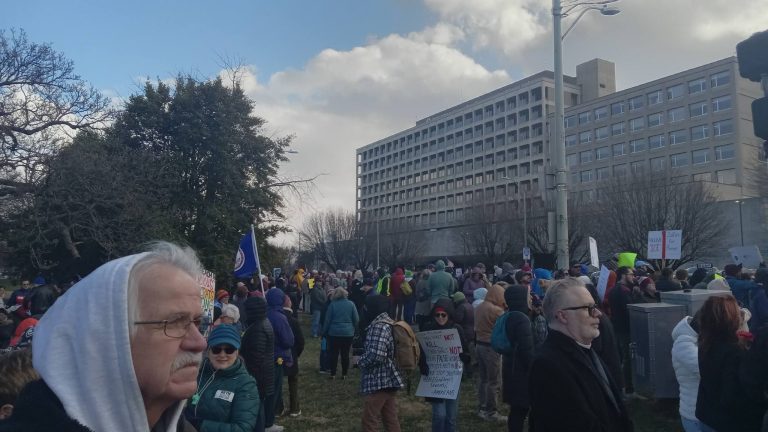 RICHMOND, Va. (AP) — Democratic Gov. Ralph Northam on Friday announced a proposal to spend $25 million to transform historical sites in Virginia, including the Richmond spot where a soaring statue of Confederate Gen. Robert E. Lee became a recent focal point of protests against racism.
RICHMOND, Va. (AP) — Democratic Gov. Ralph Northam on Friday announced a proposal to spend $25 million to transform historical sites in Virginia, including the Richmond spot where a soaring statue of Confederate Gen. Robert E. Lee became a recent focal point of protests against racism.
Nearly $11 million of the money would be used to reconstruct Richmond’s Monument Avenue, a historical boulevard that was lined with the Lee statue and other Confederate monuments for more than a century.
Most of the statues were taken down in July after Mayor Levar Stoney ordered their removal amid weeks of protests following the killing of George Floyd in police custody in Minneapolis. At 21 feet (6 meters) tall, the bronze statue of Lee astride a horse towers over the avenue on a pedestal nearly twice as tall as the piece itself.
Northam announced plans to remove the Lee statue in June. But its removal was blocked by a lawsuit filed by a group of residents who live near the statue, which is located on state-owned land. A judge sided with Northam in October, but the statue remains standing while the residents appeal to the state Supreme Court.
Northam said the Virginia Museum of Fine Arts would use the funding to hire staff and lead an initiative to redesign Monument Avenue.
“At a time when this Commonwealth and country are grappling with how to present a more complete and honest picture of our complex history, we must work to enhance public spaces that have long been neglected and shine light on previously untold stories,” Northam said in a news release.
The spending proposal is contingent on winning approval from the Democratic-controlled General Assembly. Northam plans to address his proposed “historic justice” initiatives and other components of his budget plan with the money committees of the legislature on Wednesday.
Patrick McSweeney, an attorney for the residents who sued to try to block the removal of the Lee statue, said the public is “deeply split” over the removal of Confederate monuments.
“Instead of a gracious attempt to acknowledge that most opponents of removal of statues are not hateful and racist, the Governor has inflicted an emotional insult that will not soon be forgotten. A deepened divide between the races will be his legacy,” said McSweeney, a former chairman of the Republican Party of Virginia.
Alex Nyerges, director and chief executive officer of the museum, said he hopes to bring together artists, art historians, urban planners and residents of the community to contribute to a plan to reinvent Monument Avenue.
“It is about looking to the future, looking to a future that’s inclusive, that’s forward-thinking, and there’s also an element of healing,” Nyerges said.
“These monuments have been on Monument Avenue for 130 years. They were objects of oppression, they were objects of racism, and that has scarred this community, it’s scarred generations of Richmonders.”
Stoney tweeted that the governor’s plan was an “investment in the voices of Black, brown and Indigenous Richmonders too often silenced in our official historical and cultural narratives.”
“It’s time to center those stories,” he said.
Stoney announced in July that the city was committing funding for the development of an ambitious and long-envisioned memorial campus in Richmond’s former slave-trading district, Shockoe Bottom.
Historians and community activists have long called for a greater acknowledgement of the neighborhood’s history, most of which has been bulldozed, buried or destroyed over the years. But commemoration efforts had moved at a glacial pace.
The $25 million investment proposed by Northam includes $9 million for the development of a Slavery Heritage Site and improvements to the existing Slave Trail in Shockoe Bottom. The funding will support efforts to preserve the area known as the Devil’s Half-Acre, or Lumpkin’s Jail, where many slaves were held.
Another $5 million would be used to repatriate tombstones from the former Columbian Harmony Cemetery in Washington, D.C., and create the Harmony Living Shoreline memorial. Headstones were removed from the historic African American cemetery and relocated in 1960 to make way for commercial development. Some headstones were moved to a new cemetery in Landover, Maryland, while others were sold off by the developer and used to create a riprap shoreline for erosion control along the banks of the Potomac River.
The funding also includes $100,000 to support the Virginia Emancipation and Freedom Monument project on Brown’s Island.



